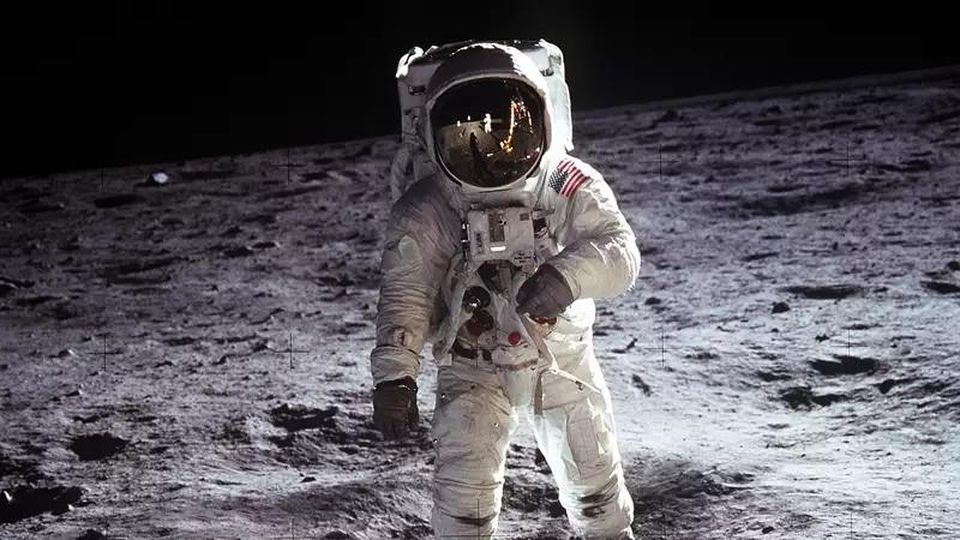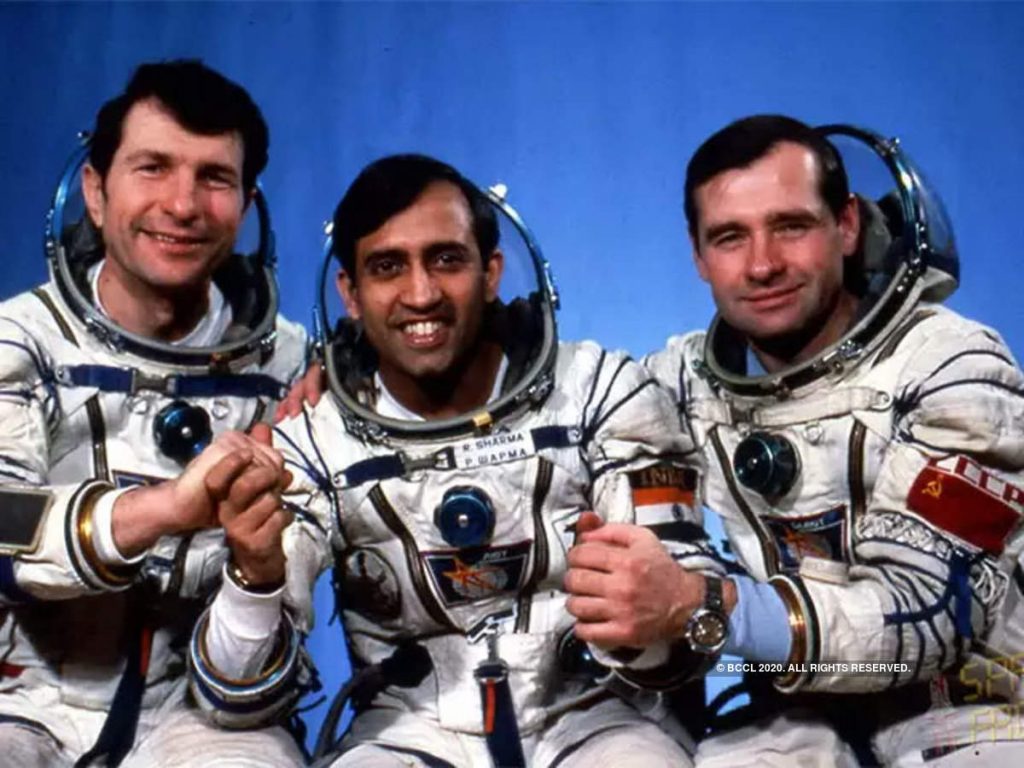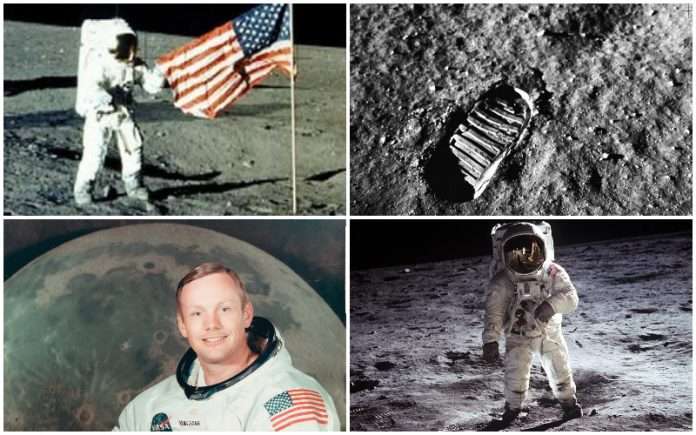Who can forget Neil Armstrong’s words, “one giant leap for mankind” as he landed on the Moon.This phrase is symbolic of the change that was happening at the time.
Being a sucker for UFOs and space odyssey, I cannot but feel an adrenaline rush even today when I think of this giant feat. Ask any second or third standard student he/she is bound to know who the first human to land on the Moon was.
Today, 20 July, (1969), marks the anniversary of NASA’s Apollo 11 mission. Fifty-one years ago, astronaut Michael Collins orbited the moon in the command and service module as his crew members Neil Armstrong and Buzz Aldrin stepped onto the moon, cementing an incredible first for human history. After two million years of the evolution of Homo sapiens or humankind had reached the stage of being able to travel across interplanetary space – finally humans become a spacefaring species. This was actually the last day of the ‘old world’ as we knew it.

Rivalry of the two super powers
The two super powers of the time the United States and the former Soviet Union were is a space race so to say. By launching satellite Sputnik 1 on Oct. 4, 1957 the Soviet Union led the way and then in less than a month’s time they again launched Sputnik 2, which carried the first dog to space called Laika. Now it was the turn of the Americans, finally, in the year 1958, the Americans launched a satellite called Explorer 1. You’ll be happy to know that NASA was also founded in that year.
To the credit of the Soviet engineers there were a number of firsts like – Luna 1, the first mission to leave Earth orbit, Luna 2, the first probe to reach the moon, and Venera, the first spacecraft to head toward Venus. One spectacular achievement that was obtained by Soviets was the successful flight of Yuri Gagarin on April 12, 1961. He became the first person to fly in space.
At the same time NASA engineers were trying to land on the Moon. But their program got a horrific start as Apollo 1 was test launched on Jan. 27, 1967; unfortunately all three astronauts on itwere killed during the rehearsal. A year later, on Oct. 11, 1968, NASA finally launched its first Apollo astronauts into space aboard a Saturn I rocket for the 11-day Apollo 7 mission. This was again followed by launch of Apollo 8. With this launch they could finally send a crew around the moon and back to Earth.
Apollo 9 was launched in 1969 by NASA which conducted critical tests of its lunar module in Earth orbit. And then Apollo 10 was launched which almost landed on the moon, it brought its crew within a few miles of the Moon surface. Then, finally on July 20, 1969, Neil Armstrong and Buzz Aldrin landed on the lunar surface and walked on its surface during the Apollo 11 mission. After this incredible feat the race cooled down.

What did this mission mean for the world?
A key gift of Apollo 11 Moon mission was the technological stimulus provided by the hi-tech nature of the programme. This obviously led to many more Apollo missions and opened up a detailed geological study of the Moon.
During the Apollo years, not surprisingly many practical products were developed by NASA like the cordless drills, PV (solar) panels, freeze-dried food, thermal insulation material, heat coatings and so on.
But you’ll be surprised to know that NASA approached Massachusetts Institute of Technology (MIT) to develop a small, light weight computer to fit into the Apollo spacecraft. The Fairchild Semiconductor Company who made them got order to the number of one million computers from NASA. This made two employees of the company to leave and form Intel in 1969. The computer revolution of the 1970–2000 started from here, which finally led to mushrooming of small PCs, smart phones, the internet and dot-com industries.We can safely say that the technological advancement was a gift of the Apollo missions and the advancement leaped forward by 10-15 years.
The successful Apollo 11 mission inspired and attracted the youth and there was new found zeal for STEM subjects across the world. The Moon landing was watched by approximately 600 million people at the same time, this was probably for the first time that the world came together for an event.
India’s own Moon mission
Inspired by all the Moon missions from around the world India too developed its own indigenous Moon missions called Chandrayaan-1 and Chandrayaan-2.
India planned a Chandrayaan program and Chandrayaan-1 was the first Indian lunar probe under this program. The Indian Space Research Organisation(ISRO)used a PSLV-XL rocket on 22 October 2008 to launch it from Satish Dhawan Space Centre, at Sriharikota, Andhra Pradesh. On 8 November 2008, the vehicle was inserted into lunar orbit.On 14 November 2008, the Moon Impact Probe separated from the Chandrayaan orbiter and it struck the South Pole within a controlled manoeuvre, this made India the fourth country to place its flag insignia on the Moon.
The second lunar exploration mission developed by ISRO was called Chandrayaan-2. The second launch pad at the Satish Dhawan Space Centre was used to launch the spacecraft on 22 July 2019 on its mission to the Moon. Chandrayaan-2 craft reached the lunar orbit on 20 August 2019 and began orbital positioning manoeuvres to land the Vikram lander. However, unfortunately the lander deviated from its intended trajectory while attempting to land. This caused a ‘hard landing’as a result of a software glitch. But India is determined, ISRO may re-attempt in 2021 with Chandrayaan-3.

Conspiracy theory: Interesting trivia
Did you know that for the last 51 years there is a theory that the moon landing was a stunt? And that the famous director Stanley Kubrick, helped create the footage that looked like man landed on the Moon? And the conspiracy theorists say it was really filmed in Area 51 in Nevada.
Why do they think that? Well, because there were no stars in the background of pictures taken from the Moon surface. And the flag that was hoisted on the lunar surface looks like it’s flapping in the wind. Conspiracy theorists say there wouldn’t be any wind blowing on the Moon surface.
Whether you believe this or not is totally upto you, but it is certainly a day to celebrate.
I personally love two movies that depict fascinating space travel, do watch Apollo 13 (1995) and First Man (2018).
In the end, I feel the biggest achievement of this historic landing was that we as a human species knew that there are new worlds to explore beyond Earth’s orbit and that the dream of deep space travel is indeed achievable. And we have forged ahead as well.
(The views expressed are the writer’s own)

Smita Singh is a freelance writer who has over 17 years of experience in the field of print media, publishing, and education. Having worked with newspapers like The Times of India (as freelancer), National Mail, DainikBhaskar and DB Post, she has also worked with Rupa& Co, a book publishing house and edited over 30 books in all genres.
She has worked with magazines like Discover India and websites called HolidayIQ and Hikezee (now Go Road Trip). She has also written for Swagat (former in-flight magazine of Air India), Gatirang (magazine of MarutiUdyog), India Perspectives (magazine for Ministry of External Affairs) and Haute Wheels (magazine of Honda).
After turning freelance writer she wrote on art and architecture for India Art n Design. She also worked for Princeton Review as a full-time Admissions Editor and then IDP Education Private Limited as an Application Support Consultant. Smita has her own website called bookaholicanonymous.com which supports her love for books and reading!
You can reach her at: [email protected]
(Collage with images from the net)

